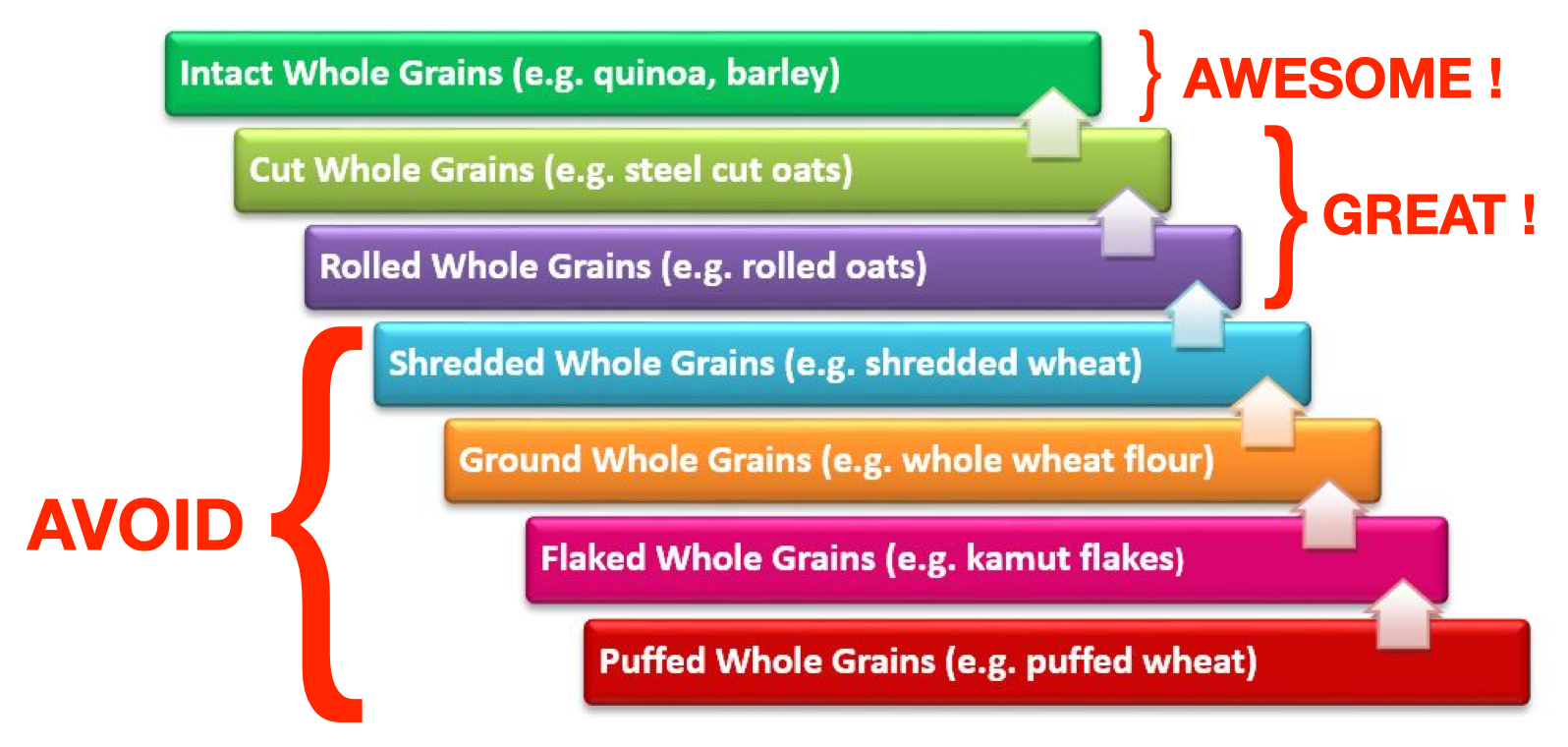Puffed grains are at the very bottom of the Whole Grains Hierarchy by Brenda Davis, as summarized in this infographic:
To understand why puffed grains are at the bottom of the Whole Grain Hierarchy, see The Science Underlying Whole Grains Hierarchy.
Often used interchangeably, for example, by Wikipedia article on puffed grains. But this article explains how puffed rice is different from popped popcorn: both require high temperature but puffed rice requires a pressure chamber.
In India, we have both 'poha' and 'murmura'. These may sound similar but the industrial / home processing techniques for producing these are different. 'Poha' is an example of flaked whole grains. 'Murmura' is 'puffed whole grains'.
- High Glycemic Index: The process of puffing grains increases their surface area significantly — that rasies the Glycemic Index of these grains. Brenda Davis shares an example in the Whole Grain Hierarchy video: Puffed rice cake has a Glycemic Index of 100 whereas refined sugar has a Glycemic Index of only 68. In other words, the rate of absorption of puffed rice is much faster than that of refined sugar!
- Dried foods have high calorie density: When we consume 'papad', 'murmura', 'puffed grains' (or even 'dried fruits'), we are eating something dry. Such foods have high calorie density (see What is Calorie Density?). In other words, a lot of calories in a small volume. How does that matter? It's best explained by this photos in the What is Calorie Densigy article. Basicaly, if we eat something whole and juicy like fruits and veggies (both of which have low calorie density), we fill up quickly and we don't overeat. But if we eat something dry like 'papad', 'murmura', 'puffed grains', we tend to eat a lot to feel full. So we're going to consume quite a few calories without realizing that we're doing so.
At offset 9:26 of the Whole Grain Hierarchy video, Brenda explains that puffed whole grains are at the 'very bottom of the Whole Grain Hierarchy'! They are by far the worst way to consume whole grains:
Interestingly, Dr Greger does not deem popcorn (popped corn) as unheallthy. In fact, in his Daily Dozen, the 'Whole Grains' category lists examples of 1 serving: "1 cup oatmeal, or 1 tortilla or slice of bread, or 1/2 bagel or English muffin, or 3 cups popped popcorn". The book How Not To Die (576 pages, 2015) by Dr Greger even has a 'Zombie Popcorn' recipe. See Zombie Popcorn (5 mins, YouTube) by NiniGirl (a great video with clear instructions) and Zombie Popcorn recipe in words.
I avoid popped and puffed grains, in harmony with Brenda Davis guidelines. I try to eat grains in their whole intact form. I'm okay with broken grains like cracked wheat ('dalia') and coarsely ground cornmeal too. And I'm okay with rolled grains like rolled oats as well.

 Instagram
Instagram YouTube
YouTube